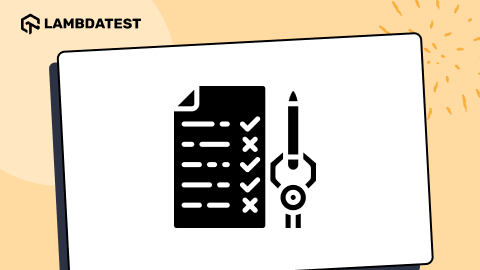How to get started with Load Testing?
Arnab Roy Chowdhury
Posted On: July 18, 2018
![]() 19032 Views
19032 Views
![]() 5 Min Read
5 Min Read
We have all been in situations while using a software or a web application, everything is running too slow. You click a button and nothing is happening except a loader animation spinning for an infinite time.
The worst case is when end users face this kind of issues. This is bad news for the developer or the owner of the application. These are because of performance issues, and the only way this can be eliminated is through performance testing.
What is Performance Testing
It is a type of software testing that focuses on performance of a system under a specific load. It does not detect bugs or defects. It produces analytics based on benchmarks and gives the developer all the diagnostic information they need to access and eliminate performance issues and bottlenecks.
Types of Performance Testing
To get an understanding of how the application runs on the system of a user, 4 different types of non functional performance testing are applied during the testing phase
Load Testing
This type of performance testing is performed to diagnose the system’s behavior when the workload is increasing
Stress Testing
It is conducted to find out how the application is working when the system is just at the boundary or already exceeding its workload capacity.
Endurance Testing
This type of testing finds out how the system is performing when continuously operated under a specific workload.
Spike Testing
It produces a diagnostic report of a system’s performance when the workload is increased all of a sudden at an elevated level.
In this article we will focus on Load Testing.
Why Load Testing is Needed
Many popular sites that are extremely well developed and well maintained suffers from serious downtime issues when the network traffic increases all of a sudden. An example includes Encyclopedia Britannica. For a promotional campaign, they provide access to their online database free of cost. For weeks they were not able to maintain performance of their website because of a huge number of visitors.
Watch this video to learn about network interception using bidirectional APIs in Selenium 4.
Load testing gives the developer and site owner confidence in their system’s performance and reliability. It also helps to detect the bottleneck by virtually creating a test scenario involving increased network traffic long before it actually happens in production environment. It also provides complementary strategies to deal with performance management and monitors the application running at production environment.

Prerequisites and Environments for Load Testing
Proper hardware and software configuration is needed to run Load testing. Hardware platform should be well configured with server machines, memory, processors, disks with high storage capacity, properly configured load machines and network. Software configuration is less complicated. A server software and operating system will do the job.
The primary measuring parameter of load testing is the system’s response time. Before the testing begins, you should gather the knowledge regarding whether the response time is already measured, whether it is applicable to business process, whether it is achievable and justifiable and if it can be measured using a stopwatch or a tool.
Load Testing Life Cycle
The following process briefly describes how load testing is carried out.
- At first a dedicated test environment is created.
- Load testing scenarios are to be determined next.
- Each load testing scenarios should include proper maintenance of diagnostic data, a predictable number of users who will be accessing the system, connection speed of the networks to be used by end user, server configurations and finally, operating systems and list of browsers to be used by the end user.
- The tester starts running the test cases and after proper monitoring, gathers all the metrics.
- The results are then analyzed and procedures for performance improvement is suggested.
- The system is fine tuned and the test cases are executed again
Popular Load Testing Tools
Apart from manual load testing, tools are used nowadays to automate the process. Load testing tools may be developed in house, some open source tools are available which can be used when your budget is low. Apart from that enterprise load testing tools are available that supports multiple protocol and can stimulate a huge number of users. Few popular tools are
NeoLoad
It is an enterprise grade testing tool designed mainly for DevOps and Agile methodology. It provides the user with automatic design of test case scenarios, along with automatic maintenance and continuous analysis of data NeoLoad can also be easily integrated with the testing ecosystem. It can be easily installed on servers like Jenkins and used along with functional tools like Selenium.
LoadView
It is a cloud-based platform that offers complete flexibility to the tester. It can test web APIs like SOAP, REST, JSON along with web servers and generates a series of GET and POST requests. It can also stimulate user behavior on critical functionalities like login, form submits etc. The tool is fully manager of cloud and available for a free trial.
WebLOAD
WebLOAD is another enterprise grade product that supports multiple applications, technologies, operating systems and network protocols. It is well known for its flexibility and the scripting gives you the privilege of smoothly executing complex test case scenarios.
Challenges in Load Testing
In spite of its multiple pros, certain cons are there as well. First of all, proper programming knowledge is required to operate load testing tools. Secondly the tools can be a bit expensive since the pricing depends on the number of virtual users that the tool can support.
It can be said that performance testing is a mandatory phase before an application is deployed in the production environment. And especially when it comes to resolving bottlenecks and making the application stable and scalable, load testing is an important performance testing procedure that can help to detect the maximum functioning capacity of the application.
Got Questions? Drop them on LambdaTest Community. Visit now














